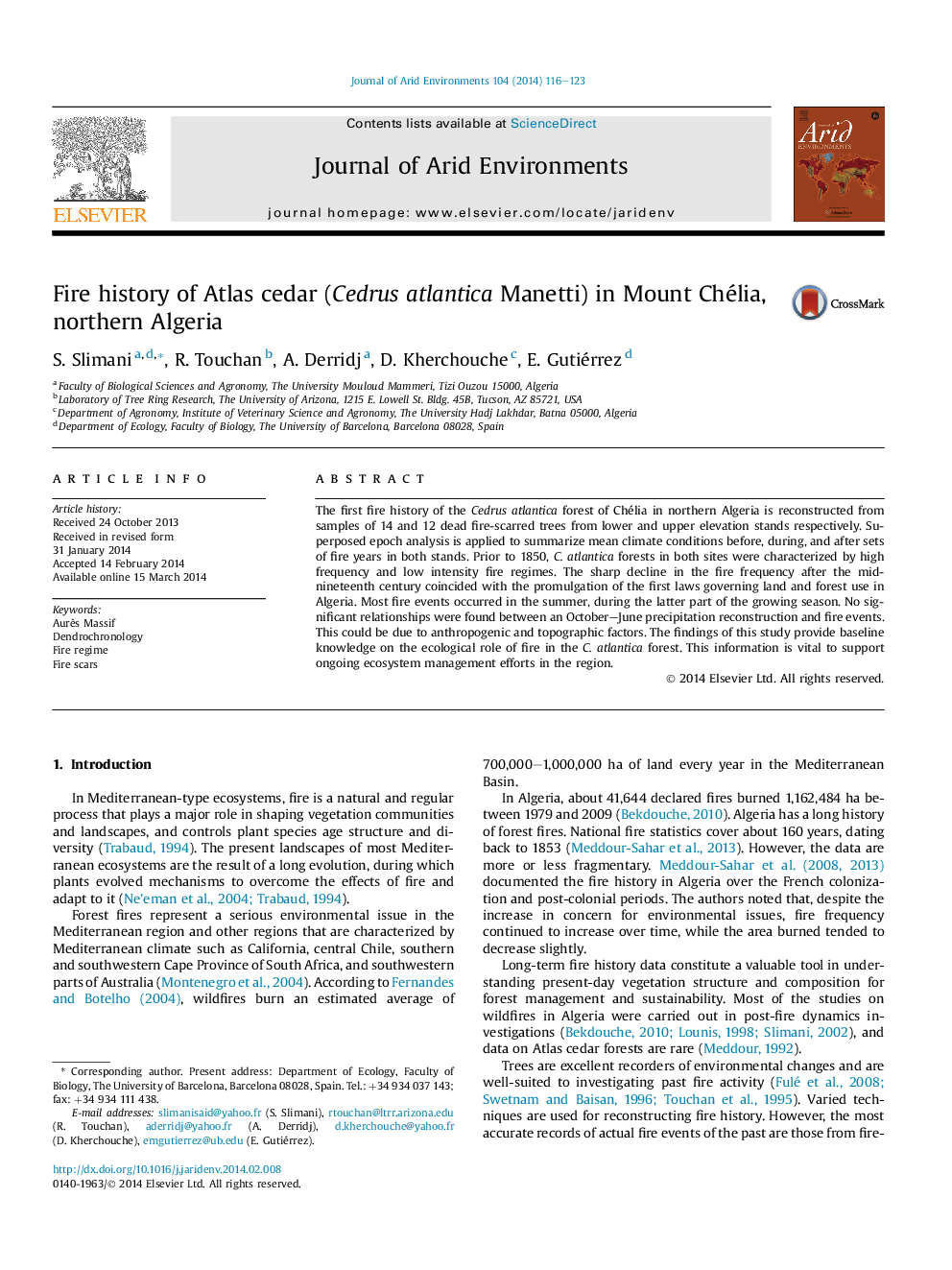| Article ID | Journal | Published Year | Pages | File Type |
|---|---|---|---|---|
| 4393017 | Journal of Arid Environments | 2014 | 8 Pages |
•We reconstructed the first fire history using Atlas cedar tree rings in northern Algeria.•Our stands were characterized by high frequency and low intensity fire regimes.•A sharp decline in the fire frequency occurred after the mid-nineteenth century.•Most fire events occurred in the summer.•Most of fires would have been anthropogenic or caused by lightening.
The first fire history of the Cedrus atlantica forest of Chélia in northern Algeria is reconstructed from samples of 14 and 12 dead fire-scarred trees from lower and upper elevation stands respectively. Superposed epoch analysis is applied to summarize mean climate conditions before, during, and after sets of fire years in both stands. Prior to 1850, C. atlantica forests in both sites were characterized by high frequency and low intensity fire regimes. The sharp decline in the fire frequency after the mid-nineteenth century coincided with the promulgation of the first laws governing land and forest use in Algeria. Most fire events occurred in the summer, during the latter part of the growing season. No significant relationships were found between an October–June precipitation reconstruction and fire events. This could be due to anthropogenic and topographic factors. The findings of this study provide baseline knowledge on the ecological role of fire in the C. atlantica forest. This information is vital to support ongoing ecosystem management efforts in the region.
